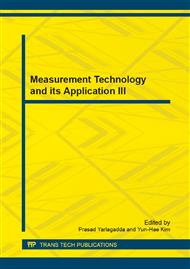p.3
p.8
p.12
p.19
p.26
p.30
p.36
p.40
Analysis of the Formation Mechanism of Crack Network in Shale by CT
Abstract:
During the drilling process of shale gas horizontal well, wellbore instability problem happens frequently. Especially in the horizontal interval, shale which has high levels of gamma is more likely to collapse which lead to delays, and exist certainly collapse period. The development of shale gas is restricted seriously. Research on the formation process of cracks network around the wellbore by CT chromatographic technique. The result reveals that under the condition of uniaxial compression, the cracks initiated inside the shale formation around the wellbore, with the propagation of cracks, between the orientation of cracks and the maximum stress direction will emerge a certain deviated angle. The drilling fluid filtrates into the formation and reduce the strength of rock which will prompt crack propagation and form crack network. Finally the wellbore will collapse with drilling fluid continuous invasion, because the invasion have altered the stress intensity factor at fracture tip, and changed the propagating direction of crack and the friction coefficient of fracture plane, which will reduce the strength of rock and the effective stress of the rock around the wellbore. Crack network dominates the mechanism of instability; mud weight increases do not necessarily lead to a more stable borehole and can further destabilize the wellbore.
Info:
Periodical:
Pages:
12-18
Citation:
Online since:
June 2014
Authors:
Keywords:
Price:
Сopyright:
© 2014 Trans Tech Publications Ltd. All Rights Reserved
Share:
Citation:


